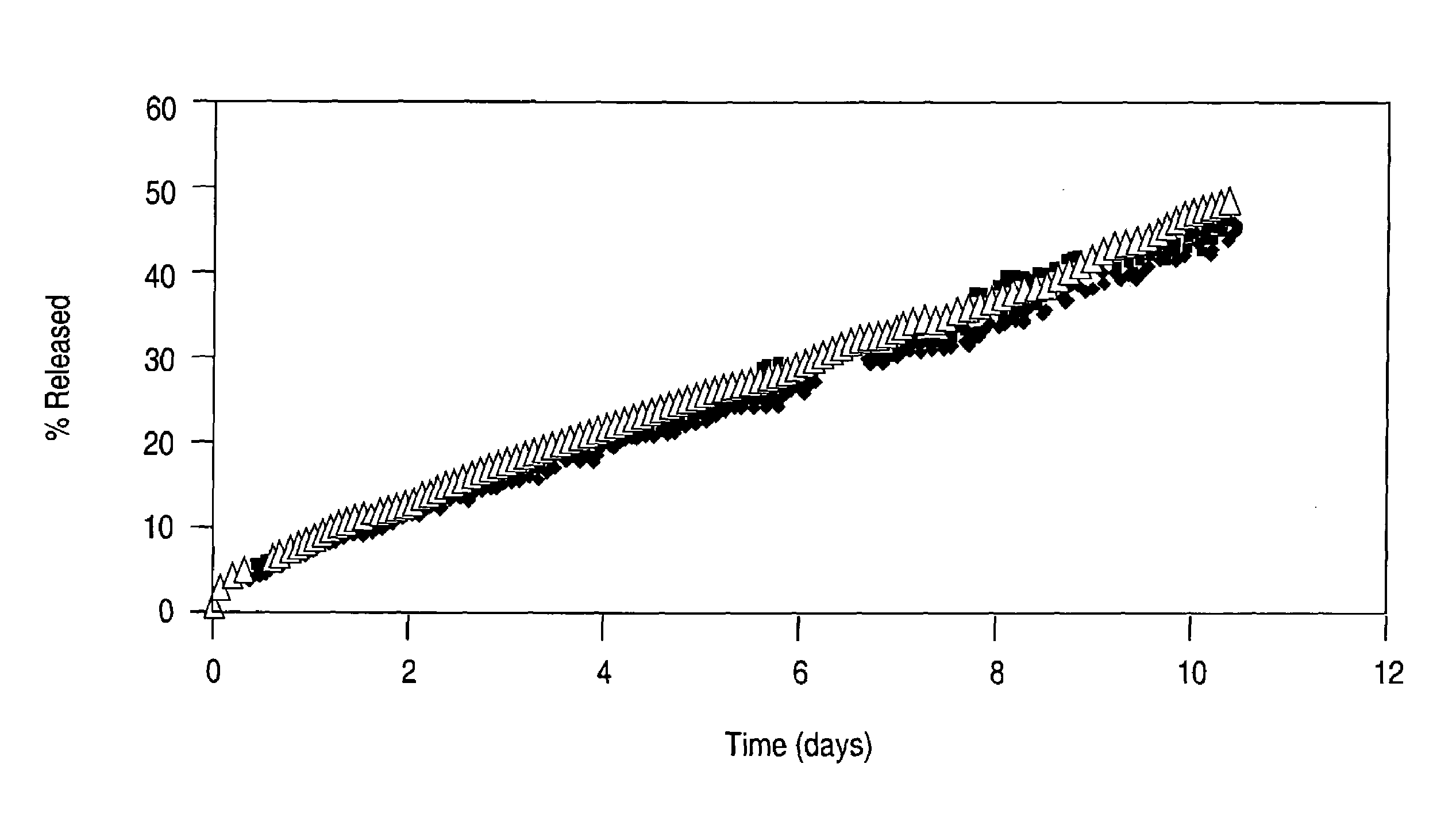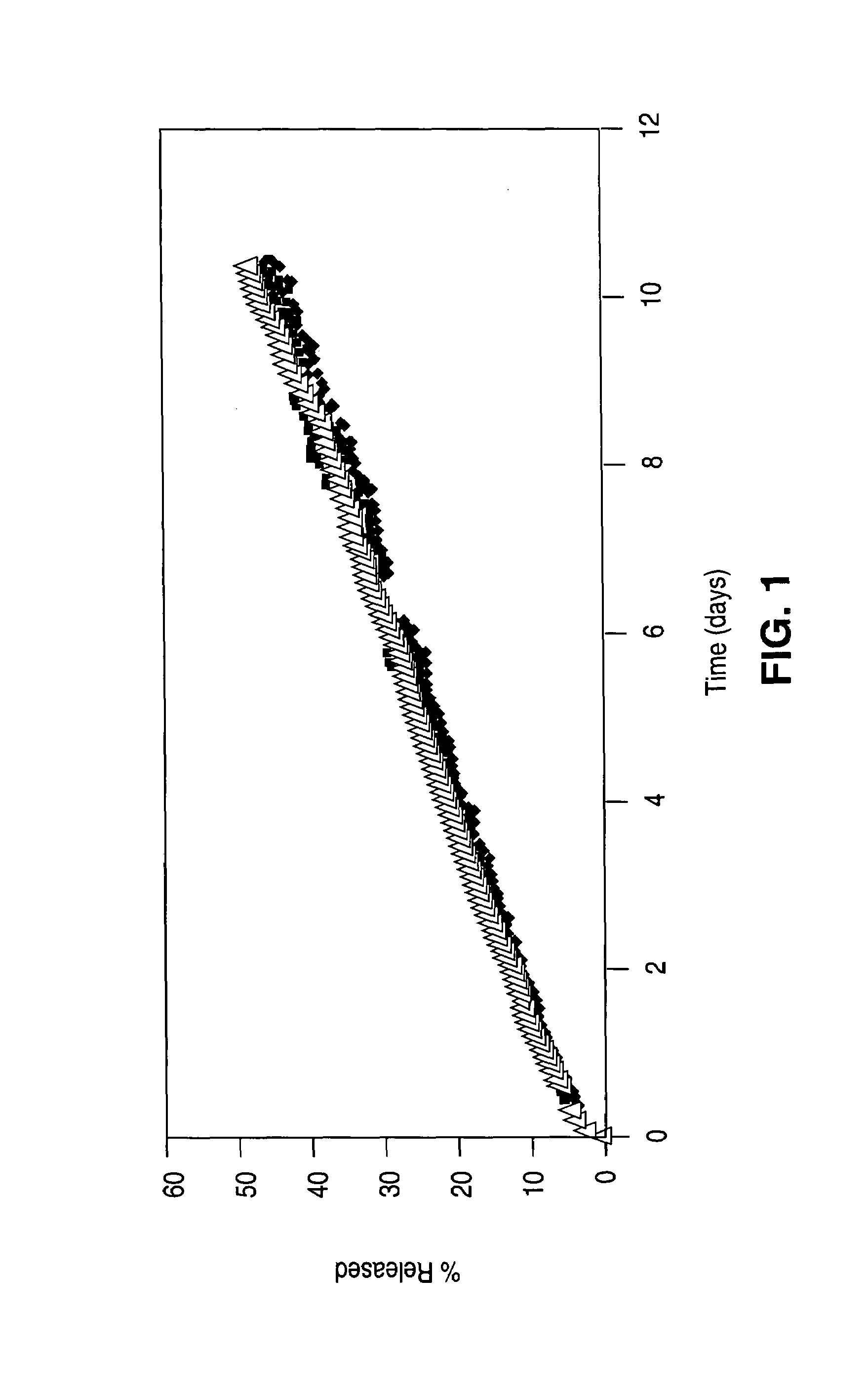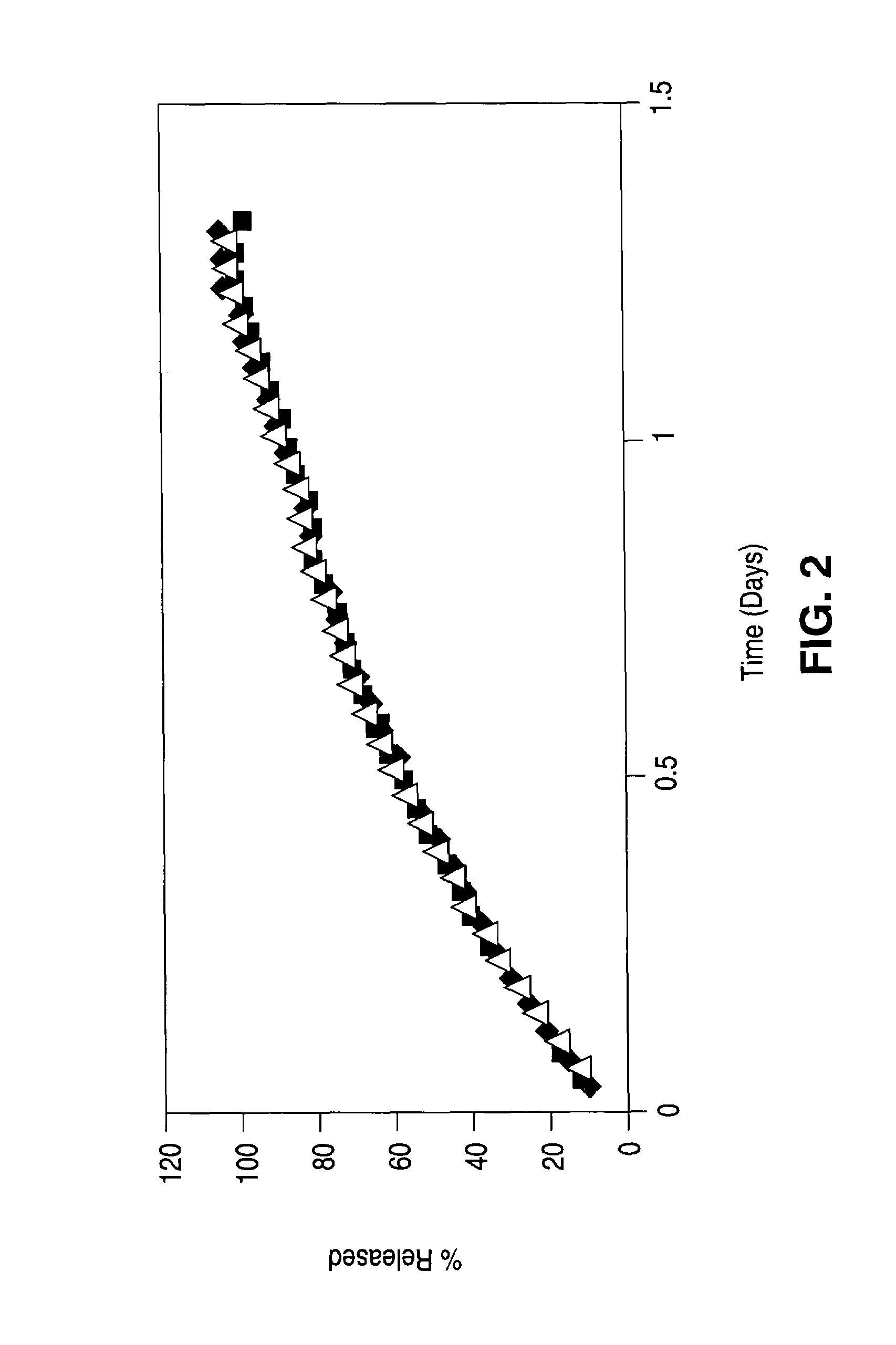Polyacrylates coatings for implantable medical devices
a technology of polyacrylate and medical devices, applied in the direction of coatings, prostheses, surgery, etc., can solve the problems of intimal flaps or torn arterial linings, affecting the treatment effect of patients, affecting the treatment effect,
- Summary
- Abstract
- Description
- Claims
- Application Information
AI Technical Summary
Benefits of technology
Problems solved by technology
Method used
Image
Examples
example 1
[0035]A polymer solution containing between about 0.1 mass % and about 15 mass %, for example, about 2.0 mass % of EVAL and the balance, DMAC solvent, can be prepared. The solution can be applied onto a stent to form a primer layer. To apply the primer layer, a spray apparatus, such as an EFD 780S spray nozzle with a VALVEMATE 7040 control system, manufactured by EFD, Inc. of East Providence, R.I. can be used. The EFD 780S spray nozzle is an air-assisted external mixing atomizer. The composition is atomized by air and applied to the stent surfaces. During the process of applying the composition, the stent can be optionally rotated about its longitudinal axis, at a speed of 50 to about 150 rpm. The stent can also be linearly moved along the same axis during the application.
[0036]The EVAL solution can be applied to a 13-mm TETRA stent (available from Guidant Corporation) in a series of 10-second passes, to deposit, for example, 10 μg of coating per spray pass. Instead of the 13-mm TET...
example 2
[0043]A stent was coated as described in Example 1, except instead of the Everolimus, estradiol was used. The coated stent was tested for a study of the drug release. The stent was immersed for 24 hours in bovine serum. The drug was extracted, and the amount of estradiol released after 24 hours was measured chromatographically (by HPLC). The results of this study are summarized in Table 2.
[0044]
TABLE 2Drug Release Study of Stent Coatings Having PBMATopcoat Membranes (EVAL-based Drug-PolymerLayer, Estradiol Drug)TopcoatDrug Loaded in% of theMembranethe Drug-PolymerDrug ReleasedNo.Solids, μgLayer, μgin 24 Hours13024015.025024013.0310024011.041602404.353001701.5
[0045]Further, a kinetic study of the drug release profile was conducted. The stent had the total amount of solids of the topcoat membrane of about 160 μg and the total amount of estradiol in the drug-polymer layer of about 30 μg. The stent was immersed in a phosphate buffered saline solution having 1 mass % of sodium dodecyl su...
example 3
[0047]A stent was coated as described in Example 1, except instead of Everolimus, etoposide was used. The coated stent was tested for a study of the drug release as described in Example 2. The results of this study are summarized in Table 3.
[0048]
TABLE 3Drug Release Study of Stent Coatings Having PBMA TopcoatMembranes (EVAL-based Drug-Polymer Layer, Etoposide Drug)TopcoatTopcoatDrug Loaded in theAmount of the% of the DrugMembraneMembraneDrug-PolymerDrug Released inReleased inNo.Solids, μgThickness, μmStentLayer, μg24 Hours, μg24 Hours1300.5412 mm24013957.9VISION2500.8912 mm2405824.2VISION31001.3012 mm2402410.0VISION4500.6113 mm18014882.2TETRA51201.4613 mm1807038.9TETRA62002.4413 mm1807240.0TETRA72002.4413 mm1804122.7TETRA83003.8613 mm1805027.8TETRA
[0049]A kinetic study of the drug release profile was conducted. The stent was immersed in a phosphate-buffered saline solution having about 1 mass % of sodium dodecyl sulfate. The solution was frequently sampled and the drug concentration...
PUM
| Property | Measurement | Unit |
|---|---|---|
| Tg | aaaaa | aaaaa |
| Tg | aaaaa | aaaaa |
| temperature | aaaaa | aaaaa |
Abstract
Description
Claims
Application Information
 Login to View More
Login to View More - R&D
- Intellectual Property
- Life Sciences
- Materials
- Tech Scout
- Unparalleled Data Quality
- Higher Quality Content
- 60% Fewer Hallucinations
Browse by: Latest US Patents, China's latest patents, Technical Efficacy Thesaurus, Application Domain, Technology Topic, Popular Technical Reports.
© 2025 PatSnap. All rights reserved.Legal|Privacy policy|Modern Slavery Act Transparency Statement|Sitemap|About US| Contact US: help@patsnap.com



